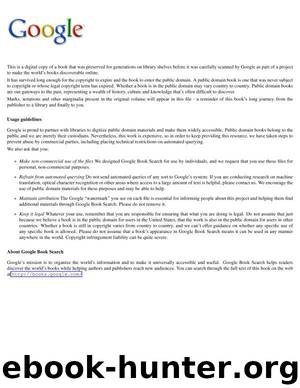The Bluejackets' manual by Cutler Thomas J. 1947- & United States Naval Institute

Author:Cutler, Thomas J., 1947- & United States Naval Institute
Language: eng
Format: epub
Tags: United States. Navy
Publisher: Annapolis, Md. : United States Naval Institute
Published: 1998-12-28T16:00:00+00:00
2d Repeater.
" Zd Repeater.
Indicators,
Flashed tn Ardois. Preceded by call prefix in Sound, and Flash, and by rocket in Very,
P
bquadron.
Division.
P
Torpedo Flotilla.
Submarine Flotilla.
y Google
Q. What are "Call Flags?"
A. Twenty-three flags representing the letters of the alphabet, except E, I, and T. They are designed in a manner similar to the alphabet flags, with " flys " of distinctive colors added to prevent confusion with alphabet flags. They are used in all calls by flags except in a case of one vessel calling another of the same division. If you have learned the alphabet flags of the International Code, you will, of course, have no trouble in recognizing the call flags.
Q. What is the "Cornet?"
A. See plate. The Cornet is used:
1. Hoisted at the fore, or at the highest gaff or signal yard —if the foremast head cannot be used—is a peremptory order for everybody to return on board at once, regardless of length of leave.
2. It means that a ship is under sailing orders and about to get underway.
3. Hoisted half-yard-arm high it is a call for the whole force to receive a wigwag or a semaphore message.
Q. What is the " Answering Pennant ? "
A. See plate. It is to be hoisted where it can best be seen in answering to a signal and kept there until the signal is hauled down. The details of the use of the Answering Pennant will be given in Part III. There are also a number of special flags and pennants which will be described in Part III.
The answering pennant is also used as a divisional mark in reporting mixed numbers.
Q. What is the meahing of the names given under the alphabet flags in the plate ?
A. In order to avoid confusing the sounds of the various letters in reporting signals, each flag is given a distinctive name. It would be a simple matter, for example, to confuse the sound of " T " and " D," but, by using the names " Tare " and " Dog," all possibiHty of confusion is avoided. The names given will always be used in reporting or calling out signals on the bridge.
Q. What are the duties of a Signalman ?
A. He stands watch on the bridge and sends and receives signals. He is an assistant to the quartermaster and keeps lookout at all times. He carries signals to the officer of the deck, when required. When needed for signalling—either in sending or receiving—he reports on the signal bridge at once, whether on watch or not. His constant aim should be to prove himself alert, quick, and always accurate; he should answer a
Digitized by VjOOQIC
signal as soon as it is understood, report the signal and send reply as soon as possible. He must, of course, be perfectl> familiar with all systems of signalling.
Q. Do signalmen receive extra pay ?
A. Yes; enlisted men regularly detailed as signalmen receive the following extra compensation in addition to the monthly pay of their rating:
Signalmen, first class $3.cx)
Signalmen, second class 2.00
Signalmen, third class i.
Download
This site does not store any files on its server. We only index and link to content provided by other sites. Please contact the content providers to delete copyright contents if any and email us, we'll remove relevant links or contents immediately.
| Automotive | Engineering |
| Transportation |
Whiskies Galore by Ian Buxton(41720)
Introduction to Aircraft Design (Cambridge Aerospace Series) by John P. Fielding(33017)
Small Unmanned Fixed-wing Aircraft Design by Andrew J. Keane Andras Sobester James P. Scanlan & András Sóbester & James P. Scanlan(32685)
Craft Beer for the Homebrewer by Michael Agnew(18082)
Turbulence by E. J. Noyes(7895)
The Complete Stick Figure Physics Tutorials by Allen Sarah(7265)
Kaplan MCAT General Chemistry Review by Kaplan(6823)
The Thirst by Nesbo Jo(6759)
Bad Blood by John Carreyrou(6477)
Modelling of Convective Heat and Mass Transfer in Rotating Flows by Igor V. Shevchuk(6354)
Learning SQL by Alan Beaulieu(6159)
Weapons of Math Destruction by Cathy O'Neil(6085)
Man-made Catastrophes and Risk Information Concealment by Dmitry Chernov & Didier Sornette(5878)
Digital Minimalism by Cal Newport;(5588)
Life 3.0: Being Human in the Age of Artificial Intelligence by Tegmark Max(5405)
iGen by Jean M. Twenge(5326)
Secrets of Antigravity Propulsion: Tesla, UFOs, and Classified Aerospace Technology by Ph.D. Paul A. Laviolette(5237)
Design of Trajectory Optimization Approach for Space Maneuver Vehicle Skip Entry Problems by Runqi Chai & Al Savvaris & Antonios Tsourdos & Senchun Chai(4957)
Electronic Devices & Circuits by Jacob Millman & Christos C. Halkias(4866)
